Science
Chapter 17: Stars and The Solar System
Class: VIII
Exemplar Solutions
MULTIPLE CHOICE QUESTIONS
Question 1
Morning star is the name given to
(a) pole star (c) planet Jupiter
(b) star Sirius (d) planet Venus
Answer 1 (d)
Question 2
Which of the following figures depicts the position of pole star correctly?
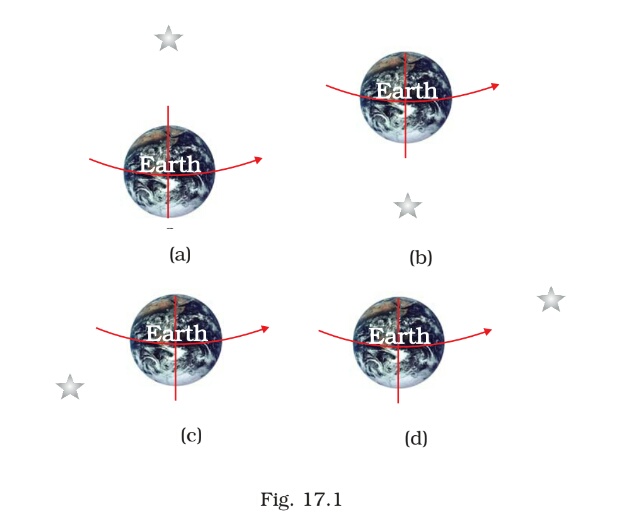
Answer 2 (a)
Question 3
Sun appears to move from east to west around the earth. This means that earth rotates from (a) east to west (c) north to south
(b) west to east (d) west to north
Answer 3 (b)
Question 4
An astronaut standing on the surface of the moon throws a ball upwards. The ball would
(a) directly fall down from the point it is released.
(b) hang in space.
(c) go up and then come back to the surface of the moon.
(d) keep going up never to come back.
Answer 4 (c)
Question 5
Suppose a new planet is discovered between Uranus and Neptune. Its time period would be
(a) less than that of Neptune.
(b) more than that of Neptune.
(c) equal to that of Neptune or Uranus.
(d) less than that of Uranus.
Answer 5 (a)
Question 6
The change in seasons on the earth occurs because
(a) the distance between the earth and the sun is not constant.
(b) the axis of rotation of the earth is parallel to the plane of its orbit.
(c) the axis of rotation of the earth is perpendicular to the plane of its orbit.
(d) the axis of rotation of the earth is tilted with respect to the plane of its orbit.
Answer 6 (d)
Question 7
The first of a month is the new moon day. On fifteenth of the same month, which of the following figures would represent the phase of the moon?
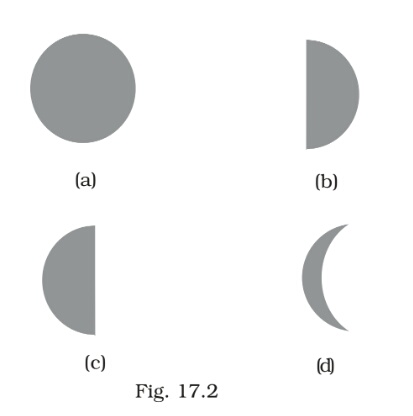
Answer 7 (a)
VERY SHORT ANSWER QUESTIONS
Question 8
Do stars emit light only during night?
Answer 8
No, they emit light all the time.
Question 9
Paheli and Boojho observe a bright object in the night sky which was not twinkling. Paheli says, it is a star and Boojho says it is a planet. Who is correct?
Answer 9
Boojho is correct.
Question 10
State whether the following statements are ‘True’ or ‘False’.
(a) The planet nearest to us is Jupiter.
(b) All the stars are at the same distance from us.
(c) The planets do not emit light of their own.
(d) The planets keep changing their position with respect to stars.
(e) The planet Venus appears in the eastern sky before sunrise.
(f) The plane in which the earth revolves around the sun is called equatorial plane of earth.
Answer 10
Question 11
John saw full moon on a particular day. After how many days will he be able to see the full moon again?
Answer 11
Approximately 29 days.
Question 12
In the picture of rotating earth given as Fig. 17.3 mark the position of pole star.
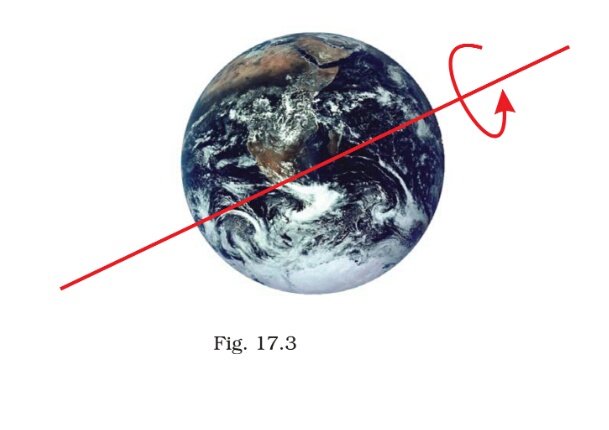
Answer 12
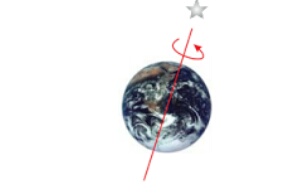
Question 13
In the given Fig. 17.4 out of the positions A,B,C and D which will indicate the position of the sun? Draw the sun at the appropriate position.
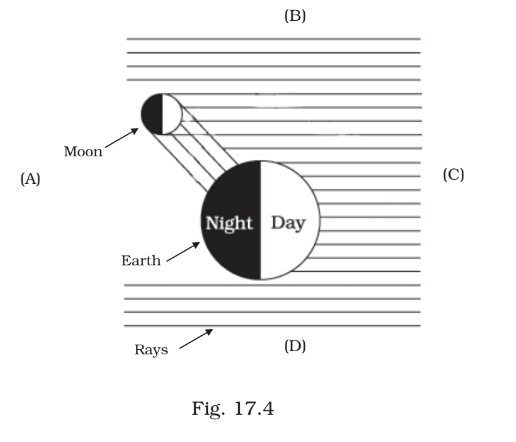
Answer 13 C
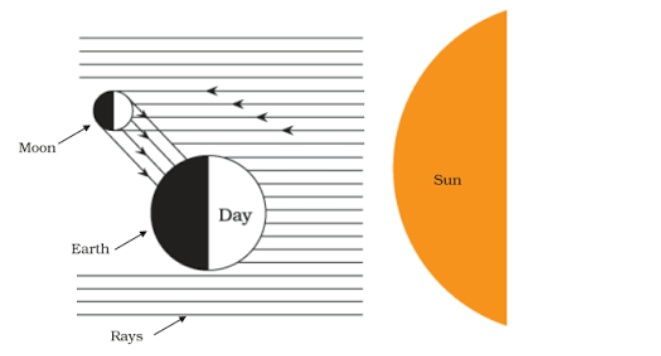
Question 14
In Fig. 17.5 mark the arrows (←), (→), (↓), or (↑) to show the direction of sunlight.
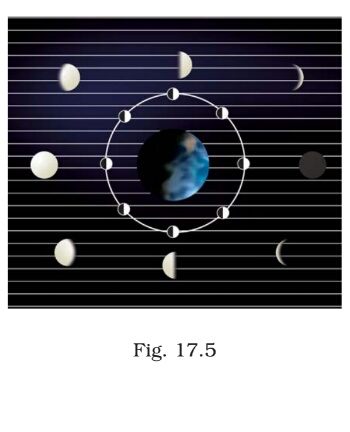
Answer 14
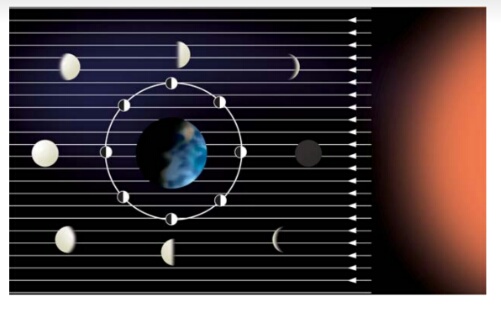
SHORT ANSWER QUESTIONS
Question 15
A star is ten light years away from the earth. Suppose it brightens up suddenly today. After how much time shall we see this change?
Answer 15
We will see the change after 10 years.
Question 16
Meteors are not visible during the daytime. Explain the reason.
Answer 16
The brightness of a meteor is extremely small compared to that of the sun, therefore, it is not seen during day time.
Question 17
Why does the moon change its shape daily?
Answer 17
It changes its shape because we see only that part of the moon from which the light of the sun is reflected towards us.
Question 18
Paheli saw the moon through a glass window at 8:00 p.m. She marked the position of the moon on the glass pane. She got up at 4 a.m. in the morning. Will the moon be visible at the same position?
Answer 18
No, because the position of the moon keeps changing during the night.
LONG ANSWER QUESTIONS
Question 19
Suppose the moon emits light of its own. Would it still have phases? Justify your answer.
Answer 19
No. The phases are seen because the moon does not emit its own light and reflects the light of sun.
Question 20
Fig. 17.6 shows comets without their tail. Show the tails of the comets at position A, B, and C. In which position will the tail be longest?
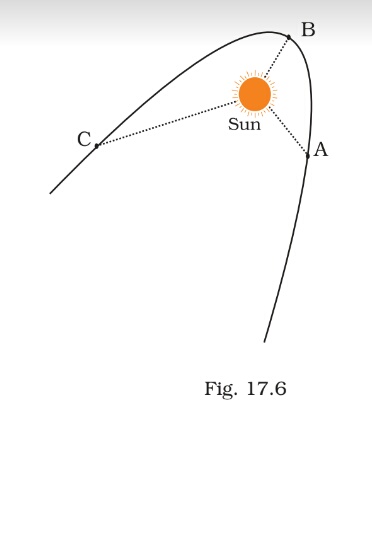
Answer 20
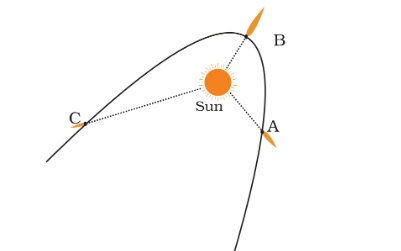
The tail will be longest at position B.
Question 21
Explain why we always see the same side of moon.
Answer 21
This is because the period of rotation of the moon on its axis is equal to the period of its revolution round the earth.
Question 22
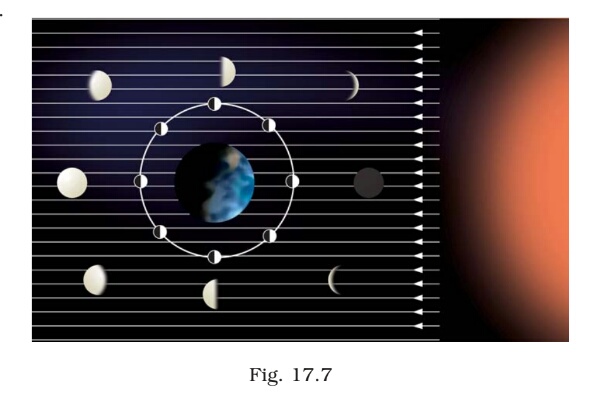
Look at Fig. 17.7 carefully and answer the following question:
(a) In which part of the sky would you see the full moon in the evening?
(b) In which part of the sky would you see the crescent moon in the evening?
Answer 22
Question 23
Write the names of all planets in Fig. 17.8.
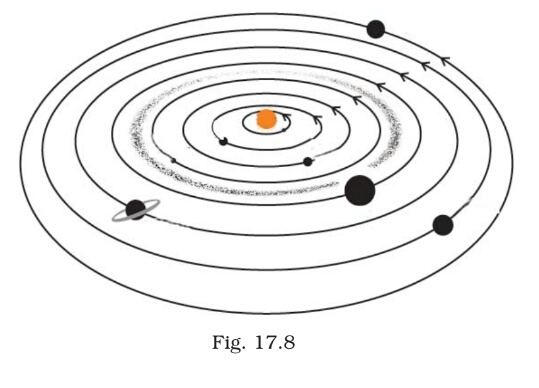
Answer 23
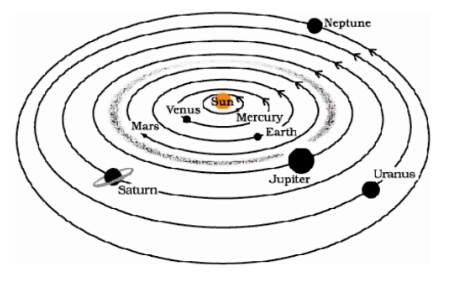
Question 24
Suppose the distance between earth and sun becomes half of its present distance. What is likely to happen to life?
Answer 24
Hint: Life may no longer exist. (See page 227-228 of textbook)
Question 25
Explain with a diagram how you can locate pole star with the help of the constellation Great Bear (Ursa Major).
Answer 25
Locate the two end stars of Ursa Major. Imagine a straight line passing through these stars as shown in the figure below. Extend this imaginary line towards the north direction. This line will lead to a star which is not too bright. This is pole star.
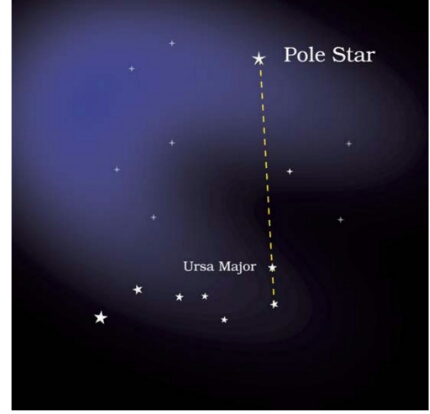
Yearlong program for Olympiads preparation & to build necessary skills for future.
Explore More
Time to mark your calendar with the upcoming Olympiads exam schedule.
Explore More
Take your Olympiad preparation to next-level by taking LIVE Classes.
Explore More
Assess your performance by taking topic-wise and full length mock tests.
Explore More
Online tuitions for international compeitions like SASMO, SEAMO, etc for Grades 1-11.
Explore More